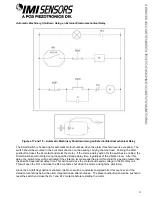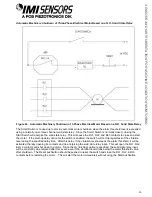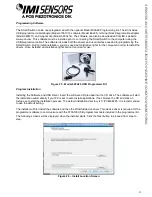
PAGE 6
SENSO
RS AN
D INS
TRUME
N
TATIO
N F
OR MAC
HINE
CON
DITION M
ONIT
ORIN
G
Standard Stud Mount Procedure
This mounting technique requires smooth, flat contact surfaces for proper operation and is recommended for
permanent and/or secure installations. Stud mounting is also recommended when testing at high frequencies.
Note: Do not attempt mounting on curved, rough or uneven surfaces, as the potential for misalignment and
limited contact surface may significantly reduce the sensor’s upper operating frequency range.
¼-28 Stud
¼-28 Captive Screw
A (in)
0.250
0.250
B (in)
0.350
0.350
Torque (ft-lb)
2 to 5
2 to 5
Step 1: First, prepare a smooth, flat mounting surface and then drill and tap a mounting hole in the center
of this area. A precision-machined mounting surface with a minimum finish of 63 µin (0.00016 mm) is
recommended. (If it is not possible to properly prepare the machine surface, consider using an adhesive
mounting pad as a possible alternative.) Inspect the area, checking that there are no burrs or other
foreign particles interfering with the contact surface.
Step 2: Wipe clean the mounting surface and spread on a light film of grease, oil or similar coupling fluid
prior to installation. Adding a coupling fluid improves vibration transmissibility by filling small voids in the
mounting surface and increasing the mounting stiffness. For semi-permanent mounting, substitute epoxy
or another type of adhesive.
Step 3: Hand-tighten the sensor/mounting stud to the machine, and then secure the sensor with a torque
wrench to the mounting surface by applying the recommended mounting torque (see enclosed
specification data sheet for proper mounting torque). It is important to use a torque wrench during this
step. Under-torqueing the sensor may not adequately couple the device; over-torqueing may result in
stud failure and possibly permanent damage.
Figure 3
– Mounting Surface Preparation Figure 4 – Mounting Surface Lubrication












































